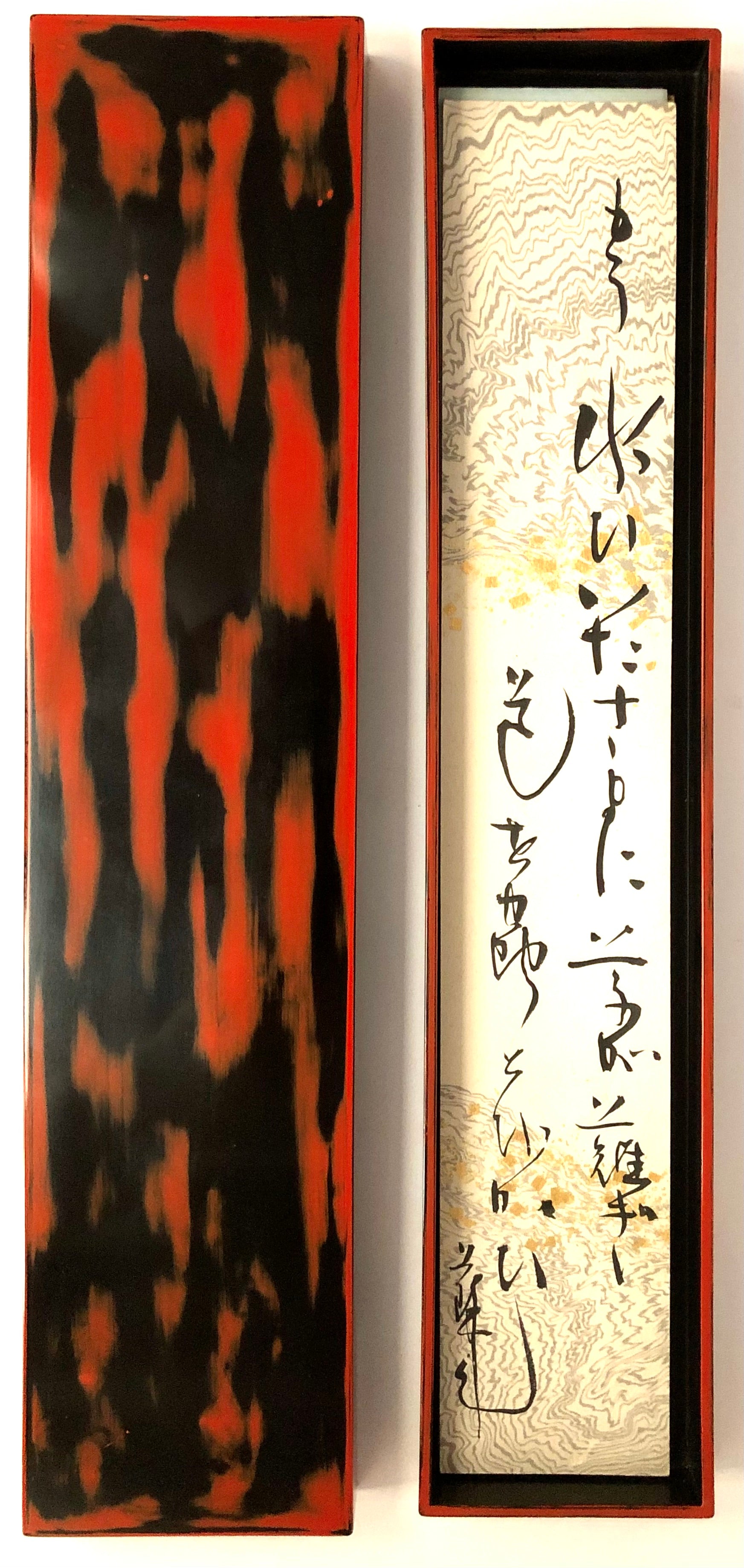

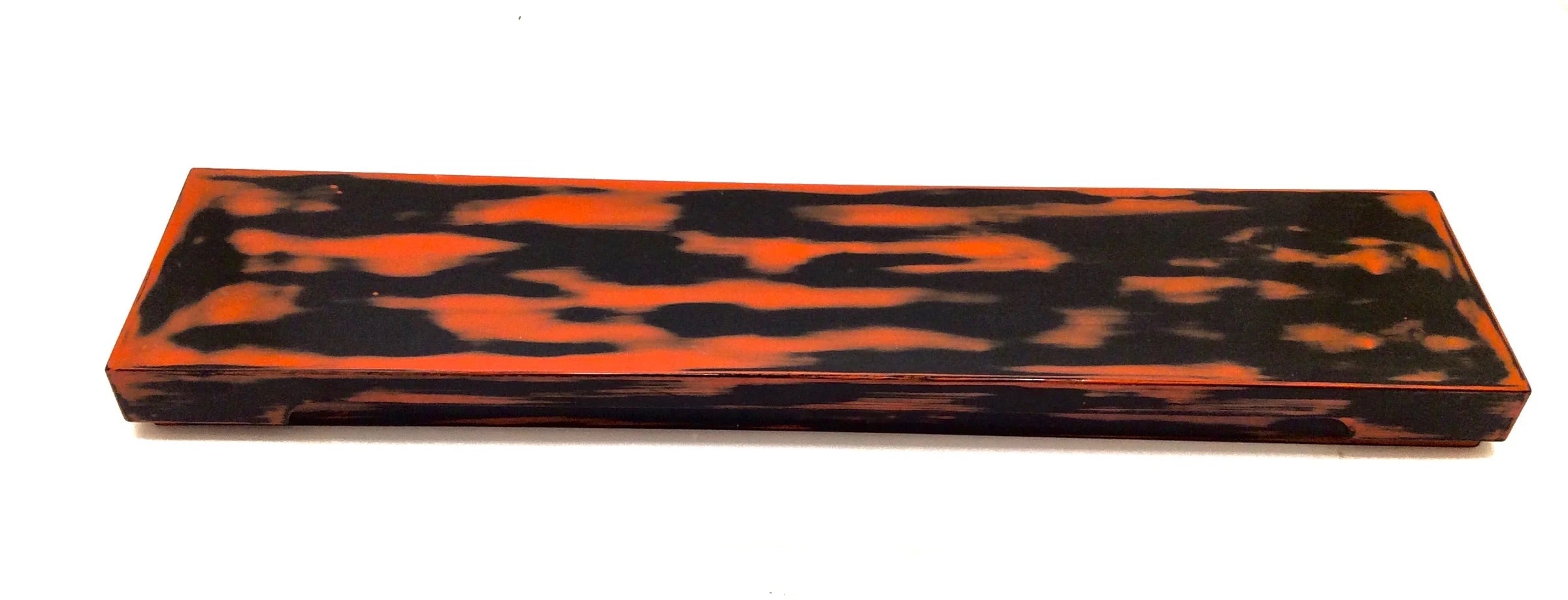

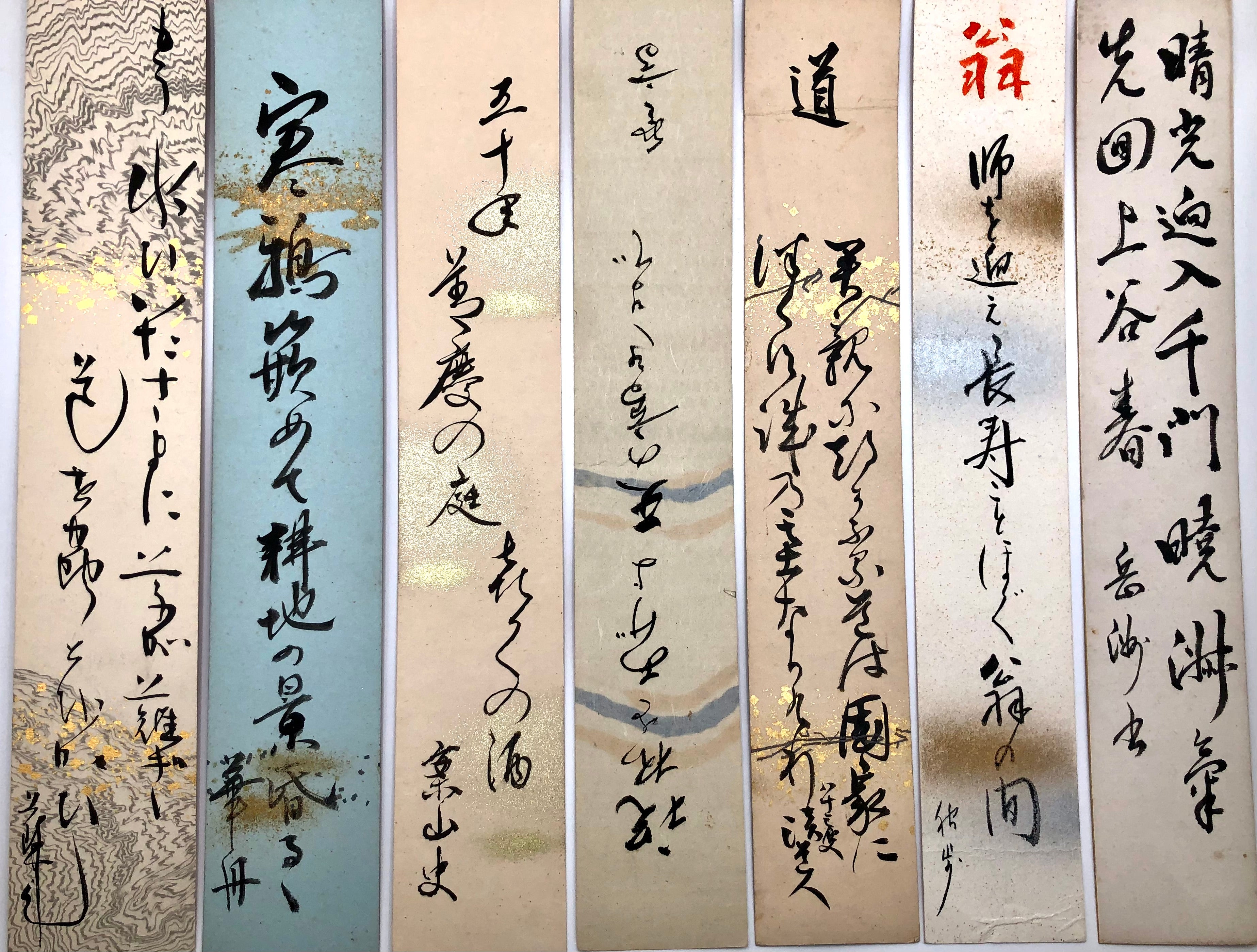
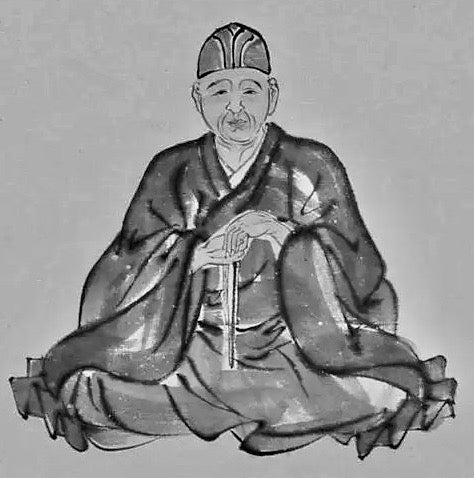
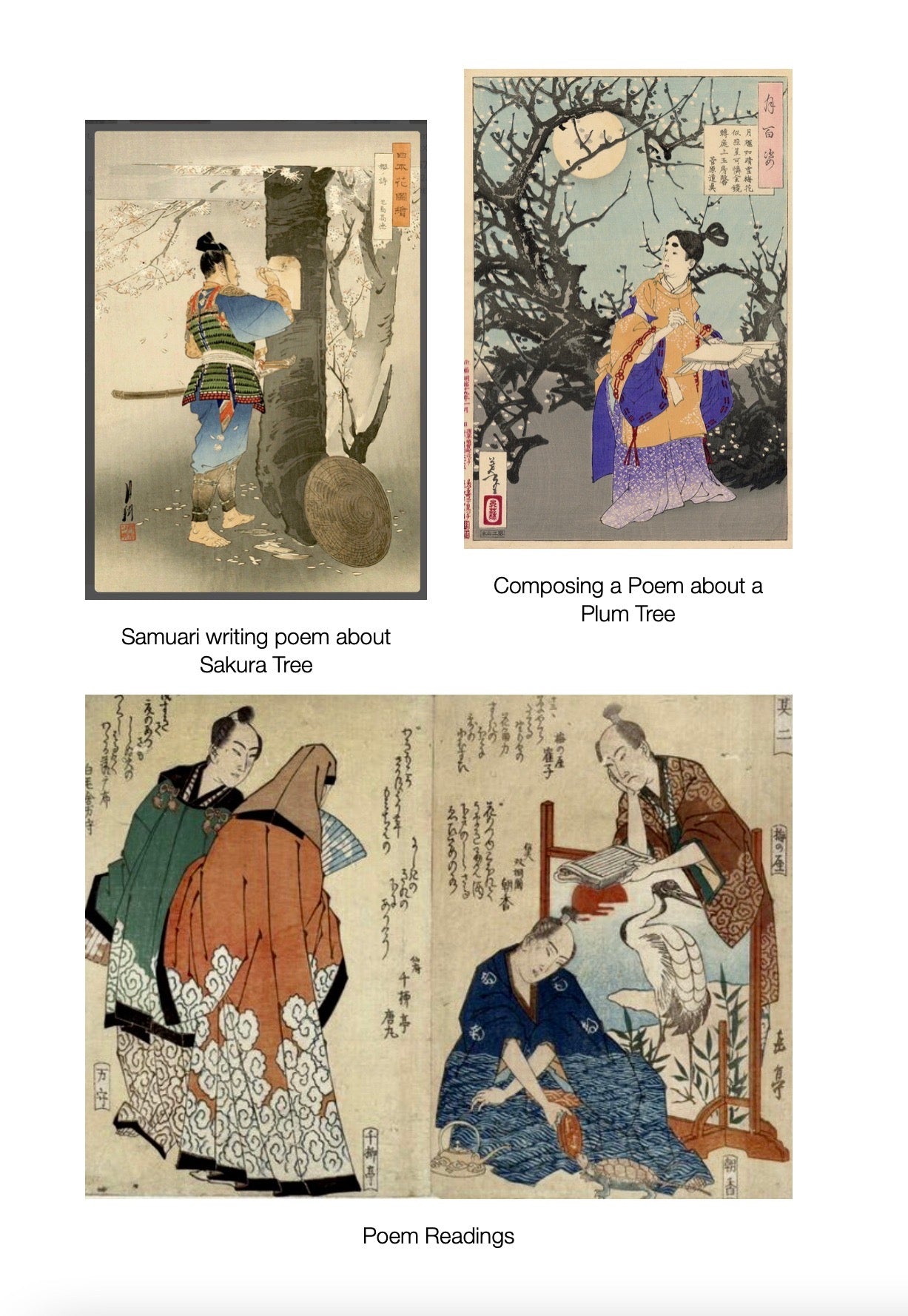
Antique Japanese Negoro-nuri Lacquer, Rectangular ‘Tanzabu’ bako with Lid and Poem Cards | RARE Japanese Poem Box
Dimensions: 15-1/4”l x 3-3/8”w x 1-1/8”h
This elegant long Negoro-nuri lacquerware box was created to store poem cards, tanzaku, (Waka poem and Tanka Haiku) of which seven are included in this offer. The viewing of new blossoms in the spring, and the changing colors of autumn leaves, was accompanied by the contemplation of classical poetry by the population, especially the aristocratic Japanese. Negoro-nuri is said to have been produced by ‘specialist’ lacquerware craftsmen, in a workshop at Ichijozan Daidenpoin Negoro-ji Buddhist Temple, (Negoro area, Iwade City, Wakayama Prefecture), from the Kamakura to Muromachi periods, (late twelfth century to late sixteenth century).
This is an auspicious expression of good fortune, with the expanding fans representing the opening of future opportunities. The collecting of poems, and the inspiration for this ‘bako’, was the supreme Japanese Haiku poet of the Edo era, Matsuo Bashō, (1644-1694). See the images supportive of this note as recorded in woodblock prints about people, poems, and nature, which is a testament to the importance of this box. It includes seven of the original poem slips.
This long and narrow vermillion lacquerware box embodies the ancient sense of Japanese beauty and minimalistic form and is primarily made to be a functional object void of elaborate decoration. The natural patina of vermillion and black lacquered layers gives the piece an elegant appearance, making this rare piece of Negoro-nuri an object to be treasured. The coloring pigment used for vermilion lacquering is cinnabar, a natural mineral. Cinnabar was said to be as precious as gold, which tells us that Negoro-nuri was made mainly for the upper classes, making this lacquer type quite rare.
Employing a complex and laborious undercoating process, shitaji, (utilizing multiple coats of black lacquer and then vermillion lacquer), is emphasized on this unusual “Tanzaku” box. Negoro artworks then undergo processes such as sabi-tsuke, and finally, a top coat of vermilion lacquer is applied to complete the Negoro-nuri process. As seen in this beautiful box, the finish radiates with a luminous red surface that has always been emphasized in Negoro-nuri pieces. The only decoration other than the lacquerwork employed is the hand-carved lid. Both sides of the lid have been carved to resemble the “ogee” motif, (a decorative line formed by two connecting curves, and when connected, they form an S-shaped curve), allowing the lid to be easily removed. Keyaki, (Japanese Zelkova, a tree related to elm wood), is the foundation wood to form the piece. The craftsman is unidentified.
Negoro lacquer derived its name from the Buddhist temple of Negoro-ji, located in the mountains of present-day Wakayama Prefecture, just south of Osaka. A special exhibit of “Masterpieces of Japanese Negoro Ware” was held at the Okura Shukokan Museum of Fine Arts, Minato-ku, Tokyo, celebrating this style of lacquerware, in which only three Poem boxes were noted as world-class design, exemplifying the notion of “functional beauty”. For Additional information see https://mingeiarts.com/blogs/celebration-of-mingei-journey-through-japan/lacquerwork-an-important-intangible-ancient-art.
Condition: Excellent, with a beautiful original patina and depth to the finish. This pre-owned piece retains the original craft/workmanship. There is no discoloration, chipping/cracking, surface wear, corners solid, or structural damage. One poem card is slightly wrinkled from yearly readings (see individual images of poem cards). This poem box exhibits a wonderful refinement and is highly appreciated by connoisseurs as objects of outstanding design, that pursue a certain utilitarian beauty.
